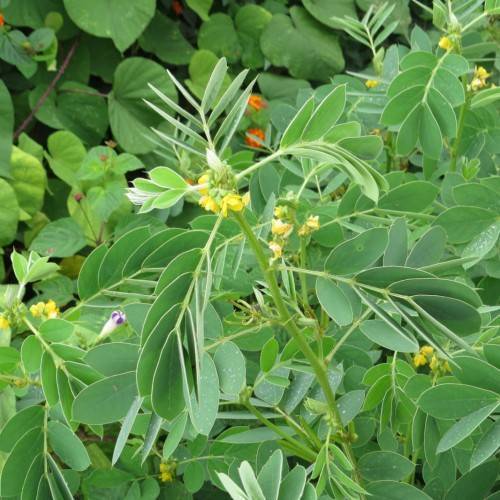
java-bean
Senna obtusifolia
Cycle:
Herbaceous Perennial
Watering:
Average
Hardiness Zone:
5 - 10
Flowers:
Flowers
Sun:
Full sun
Fruits:
Fruits Ready In Fall
Edible:
Yes
Leaf:
Yes
Growth Rate:
Low
Maintenance:
Low
Poisonous To Pets:
Yes
Drought Tolerant:
Yes
Salt Tolerant:
Yes
Invasive:
Yes
Care Level:
Medium
watering
Java-bean plants should be watered regularly, with deep soakings about once a week. Water less often in winter and more often in spring and summer when the plant is actively growing. Avoid over-watering, which can cause root rot and other problems. Be sure to never allow your plant to sit in soggy, water-logged soil. Water your java-bean early in the day so that the leaves have time to dry before nightfall.
sunlight
Java-bean (Senna obtusifolia) is a plant species native to the Caribbean and South America that prefers full sun to partial shade. The plant requires a minimum of 4 to 5 hours of direct sunlight every day and does best when the temperature is between 65–80°F. It is best to avoid midday sun in the hotter months as the intense heat might burn the leaves. During the colder months, the plant can tolerate more sun and should be moved outdoors if it is in a container indoors.
pruning
Java-bean (Senna obtusifolia) should be pruned annually in late winter or early spring, when temperatures are mild and the threat of frost has passed. Pruning should be done conservatively, removing no more than 1-third of the plant's overall growth. Before pruning starts, remove all dead or damaged branches and plants from the area. Pruning should create an open structure, allowing for sunlight and airflow to reach all parts of the shrub. When cutting branches, cut just above a node; this creates a stronger callous and encourages proper healing. Pruning can also help keep the plant from becoming too top heavy and leaves the unique shape of the Java-bean plant intact.
